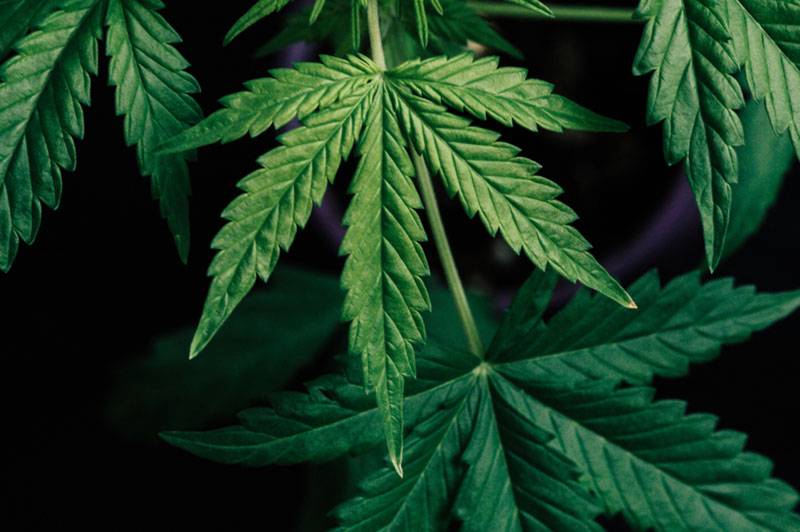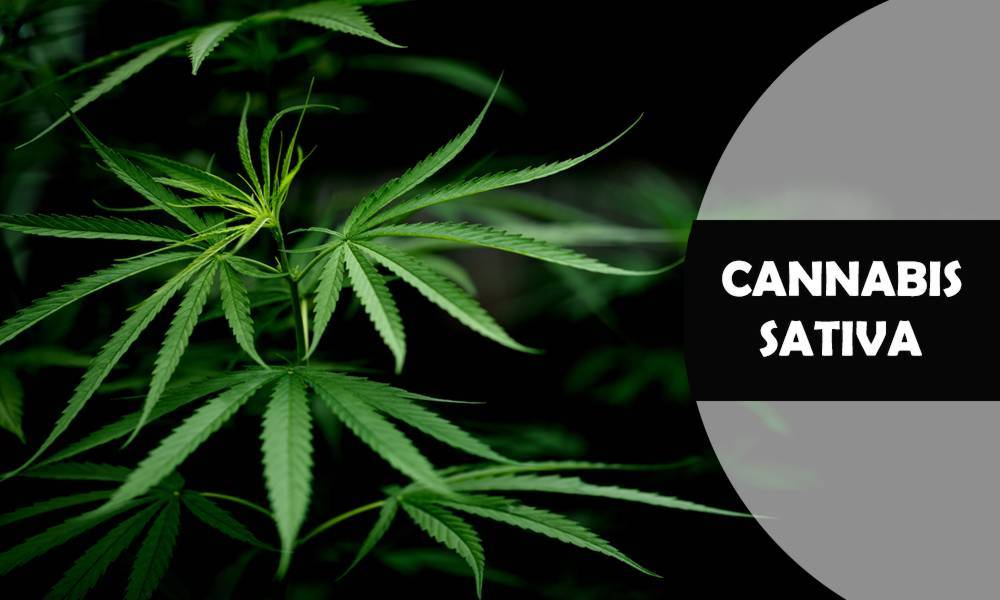Cannabis has always represented a spirit of freedom. It enables those who partake with a sense of calm and creates the ground work for a healthier mind. It provides the freedom that opens up avenues for growth and mindfulness. With the advent of technology and science in the 21st century, the chemicals that create these feelings have been determined. With the use of modern techniques in the growth of cannabis, two major strains have been isolated i.e., Sativa and Indica. In addition to these, hybrid strains are also created which enhance the “high” of the strain based on the consumer’s preferences.
Strains are created to enhance particular traits, to distinguish the plant for commercial reasons, and to make it further useful as a medicine. The titles of variants are usually selected by the producers and represent characteristics of the herb such as flavor, appearance, or aroma, as well as the strain’s roots. The key difference between the two strains is that when someone consumes them, or “smokes up”, Sativa makes them energized and focused. Whereas, cannabis Indica proves to be a much calmer and relaxing strain. It all bottles down to the reason why someone is consuming cannabis to really choose which strain will be more effective.
What Really Is Sativa? Here’s a Quick Break Down
The word that is sometimes used in the marijuana product industry to assess a recreational commodity that has inspiring, cognitive, and vibrant results. As science progresses, it’s becoming apparent that the effects of marijuana seem to be more diverse than just sativa against indica. Cannabis sativa plants are distinguished by broad, narrow star leaflets, and also by prolonged bloom cycles. As many as 13 leaves can be found on the delicate sativa plant. Sativas thrive in hotter temperatures and can reach a height of 4 meters in a full season harvest.
The strain known as sativa is a plant that grows native to the Asian continent that has spread across the world leading to extensive production. It is often used as a raw material in the manufacture of fiber, oils, nutrition, leisure, philosophical and theological beliefs, and therapy through written history. Based on the intended use of the harvest, significant components are extracted. The term “sativa” means “to grow.”
Sativa variants are frequently used to combat mental issues mainly due to its enlightening influence. Sativas are sometimes used medicinally for:
- Social and chronic anxieties may be relieved by boosting one’s mindset.
- Increasing inspiration and concentration
- Raising activity levels to make one feel less exhausted
- Increasing one’s appetite, also known as ‘Munchies’
Effects of Cannabis Sativa
Marijuana, just like every strong medication, does have the ability to cause undesirable side effects. A few of these symptoms appear across both indica and sativa variants, but are far more likely to take place with sativa – dominant strains. The main reason is not really the drug but more importantly the condition and mental capacity of the person that is voluntarily ingesting a substance that is foreign to the human body. Following are some of the adverse effects of the Sativa Strain:
Insomnia: Even though sativa strains frequently boost morale and concentration, taking a dose before sleeping could cause insomnia and restlessness. Again, the point of emphasis is that these symptoms vary from person to person. Even though one may like lying in bed with crazy ideas racing around the mind at first, they may get irritated if you are unable to fall asleep.
Disorientation: It’s possible to feel disoriented after consuming some cannabis, but it’s even more probable if users pick a sativa variant with a high potency of THC. Smoking marijuana reduces blood pressure and heart rate, which can cause one to feel dizzy and nauseous, particularly if people shift their positions unexpectedly. The only possible solution to avoid being dizzy is to stay hydrated and be in a relaxed known environment.
Hunger: When using effective cannabis, the cravings might be a concern. This is a helpful consequence if one is planning to gain pounds, but it can be frustrating and unpleasant if they’re not. People who are just looking to just pass through the munchies they should choose nutritious foods to minimize the harmful effects of overeating, or just grab a quick bite of something sweet in order to raise their blood sugar and feel fulfilled.
Everyone who ‘smokes pot’ on a daily basis may be concerned about the consequences over the years. Whereas a majority of consumers agree that smoking marijuana has long-term beneficial effects, there are still certain dangers to remember. The far more important risk associated with long-term marijuana use occurs when you smoke it in blunts, joints or bongs. Marijuana, while not as toxic as smoking cigarettes, will also irritate the lungs. Coughs and throat burns are one of the problems that it can cause. If not treated, it can lead to other chronic respiratory problems. Alternatively, vaping or eating baked goods is thought to be a much better way to use Sativas.
Chemical Compounds Found in Sativa
The Sativa strain, like all other marijuana strains, contains two main cannabinoids. These are Tetrahydrocannabinol and Cannabidiol or as they are commonly known as THC and CBD. The THC molecule is distributed in tiny hundreds of molecules. This is the main ingredient of any strain that makes the consumer feel ‘high’ or ‘buzzed’. Whereas, CBD is the chemical compound that is used to treat mental illnesses and provides the calming and soothing feeling of smoking Sativas.
CBD and THC share the same chemical composition as each other: 21 atoms of carbon, 30 atoms of hydrogen, and 2 atoms of oxygen. CBD and THC are genetically equivalent to the endocannabinoids found in the human body. These endocannabinoids are able to communicate with the cannabinoids THC and CBD as a result of this similarity. The relationship has an effect on neurotransmission. The activation of neurotransmitters in the brain is affected by this communication. Neurotransmitters are the receptors that communicate signals throughout the body and play a role in a number of brain functions such as memory, pain, tension and dreams etc. This is one of the reasons people under the influence of cannabis have a trouble remembering things they have done or said. Once the effect wears off, the memory returns to its normal state.
Plant Lineage of Sativa
Sativa strains flourish in warmer months and it is preferred to have them in the field rather than in flower pots hidden in someone’s attic, making it an excellent strain for growing outdoors. The bulk of the initial sativa weed strains emerged around the equatorial region in countries that receive strong sunlight throughout the year.
Sativa variants have scattered leaves and vibrant, petite, fragile leaves that can grow up to 100 inches in length. Since there is no extreme climate incentive to multiply quickly and distribute spores, they have a prolonged flowering duration. The longer bloom cycle is partly mitigated by a shorter vegetative period during which little to no flowers bloom. Sativa is recognized for its poor concentrations.
Sativa crops are not approved for small growers who choose to produce cannabis enclosed or in a small room. These species enjoy warm weather and a high degree of moisture, and they flourish where allowed enough room to expand. If someone is starting from seeds, shoot for a temperature of 75 degrees Fahrenheit (24 degrees Celsius) to promote plant growth in one to two weeks. Lower temperatures can cause the root system to appear later. To discover more about growing various strains be sure pay a visit here
Difference Between Sativa and Indica
With over 1,000 marijuana variants bred over the last few generations, it’s important that patients consider the various forms of effectiveness open to them in forms of cannabis medication. Some cannabis variations are more suited to certain illnesses and conditions than others. It’s important to choose the right strain to ensure that patients have the best care possible.
It’s important to choose the right strand to guarantee that physicians can provide the right medical care. Marijuana that comes in three varieties: indica, sativa, and ruderalis. Ruderalis species are limited and produce the smaller volume of medicine and when they do produce the result is inefficient and unappealing to consumers. As a result, ruderalis varieties are usually discouraged by growers and harvesters; the medical cannabis population is more interested in indica and sativa varieties.
Sativas are reflective and elevating, boosting imagination and performance. Sativas have more of a mind feeling, whereas indicas have more of a physical heavy. Sativa trees, on the other hand, take longer to mature and produce fewer medications than indica strains. That’s why indica varieties also long overshadowed those accessible on the underground market, where the only interest is benefit rather than clinical usage.
Indica strains have grimy, musky, and zesty aromas, while sativa strains have soft, floral, or fiery aromas. Terpenoids, plant compounds that are similar to THC and CBD, are responsible for the variation in scent. Although these compounds have some strikingly vibrant odors, their therapeutic effectiveness is perhaps their biggest contribution to customers.
Medical Benefits of Cannabis Sativa
Marijuana was being used as a drug even before regulation earned it a negative image, and its healing effects have only recently been recaptured. According to studies, Cannabinoids are also discovered to serve as active antioxidants, reducing oxidative damage. They accomplish this by interacting with reactive oxygen species and preventing cell damage. As a result, cannabinoid substances can be helpful in the treatment of a variety of cardiovascular and old age illnesses, such as high blood pressures and paralysis strokes.
THC and CBD have a neuroprotective effect on nerve cells, that may aid in the prevention of major brain diseases like Alzheimer’s. Cannabis can also assist in the prevention of leukemia and similar tumorous diseases. They could be able to do this by speeding up the mechanism of neurogenesis, or the death of old, organic matter. This could help prevent tumors and infectious agents from developing. By reducing psychological stress and changing lifestyle habits, cannabis could be able to help alleviate some of the causes and symptoms of severe inflammation. CBD has also been shown to aid in diet and exercise and the limiting tobacco intake.
According to scientists studying the effects of Cannabis on the human body, phytocannabinoids can assist with severe diseases, personality and cognitive illnesses, autoimmune diseases, and a variety of other medical problems. The relationship of the two organic compounds will fully modify your perception of each variant; for example, one mixture can produce concentration and alertness, while another produces calm serenity. Marijuana’s use in the treatment of glaucoma goes back to the early 1980s. Glaucoma is a nervous system condition that can cause nerve damage and visual impairment. Lowering intraocular pressure is the key therapy for glaucoma.
Popular Sativa Strains
Following are some of the best rated Sativa strains based on user experiences:
Acapulco Gold: Acapulco Gold is a very popular and widely acclaimed cannabis variety that originated in Acapulco, Mexico. It’s known for causing giddiness and energizing results. It’s said to help with exhaustion, tension, discomfort, and vomiting, among other things. With gold, green, and brown colors and lots of pigment on the tips, the orange golden fibers imitate a treasure chest. When the bud is cut up, a charred caramel scent persists. Acapulco Gold is widely regarded as one of the finest marijuana products ever made, but it has become increasingly tough to obtain. THC: 19%
Sour Diesel: Sour Diesel sativa strain is a strongly energizing, mental state altering strain that can provide a blast of constructive power. It also has significant stress-relieving and comforting properties. Sour Diesel creates energizing and swiftly dreamy cognitive results. The taste characteristic of this variant is smoky and smells like diesel. People who use prescription cannabis prefer Sour Diesel to cope with problems including fatigue, injury, and anxiety. This plant blooms in 77 days and thrives wild in a hot, open space, according to farmers. This is one of the earliest marijuana strains to be perfected. It was introduced in the 90s has been a fan favorite ever since. THC: 18%
Grandaddy Purple: Granddaddy Purple would be another variation that is very soothing. It’s well-known for its sleep-inducing and stress-relieving properties. It may also trigger exhilaration and boost craving, which is beneficial if you’re having a loss of motivation. Big Bud transfers on its bulky, lightweight bud shape to this California favorite, which inherits a nuanced grapes and berries fragrance from its Purple Urkle relative. GDP plants are deep purple in color, offering a startling resemblance to the snow-like dusting of purplish color glass. Its strong effects can be sensed in both the mind and the body, providing a combination of mental ecstasy and physical relief. Although the emotions that float about in a dreamlike haze, the physical self is more likely to remain put for the remainder of GDP’s effects. Granddaddy Purple is often preferred by customers seeking relief from discomfort, pressure, exhaustion, decreased appetite, and muscle aches. GDP provides farmers with large crops that are able to harvest after 60 days of interior cultivation. THC: 17%
Pineapple Express: Pineapple Express seems to have a pineapple-like smell, as seen in the 2008 film of the same name starring James Franco and Seth Rogen. It’s calming and uplifting, but it’s also shown to offer everyone a boost of energy. This is the kind of variant that will improve efficiency. The fragrance is reminiscent of fresh apple and plum, with hints of pineapple, fir, and rosewood on the palate. This hard-hitting combination delivers a light as possible energizing pulse that’s ideal for fruitful evenings and artistic retreats. THC: 18%
White Widow: White Widow lifts the spirits, energizes everyone, and loosens users all at the same time. It is said to assist in the reduction of stress, fatigue, and exhaustion. White Widow will help you stay energized and warn if you’re feeling terrible. Since its emergence in the 1990s, White Widow has graced the tables of any Dutch restaurant. Its buds are white and coated in shiny bowls foreshadowing the powerful results to follow. Instantly, an intense explosion of giddiness and vitality bursts out, inspiring both communication and imagination. The characteristics of White Widow also spawned a slew of other stories, including White Russian, White Rhino, and Blue Widow. Numerous farmers, however, preferred the traditional White Widow, which blooms in around 60 days when grown enclosed. THC: 16%
Blue Hawaiian: Blue Hawaiian is recognized for its attractive flowers, which are light green to amber in color and filled in rich orange and red fibers and crystals. Blue Hawaiian is a citrusy and smoother strain produced from Blueberry and Hawaiian strains. Flowering plants occur about ten weeks after planting and are said to have a healthy and controlled high.
Final Thoughts
Smoking whichever sativa someone ends up choosing, some activity must be planned before hand to utilize the energy obtained and always remember to stay hydrated during the high. In the end, when someone has the cannabis, the legality goes out the window and the only aspect left is to enjoy it while they can. Keeping in mind not to over do it and to avoid the munchies.









